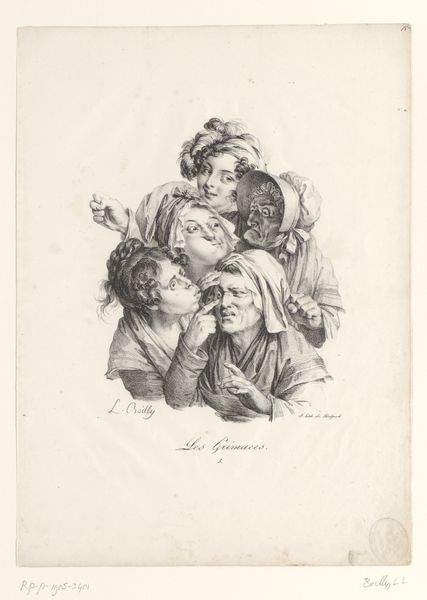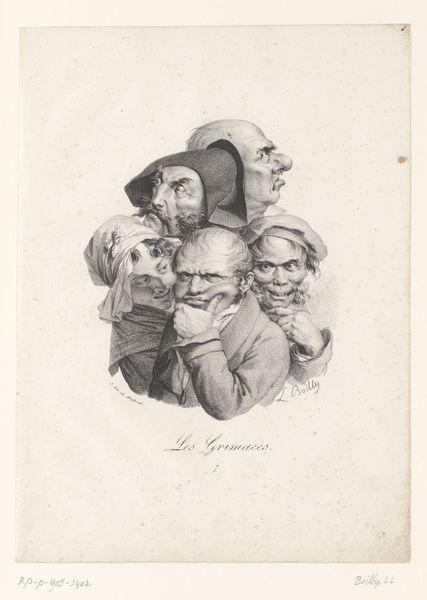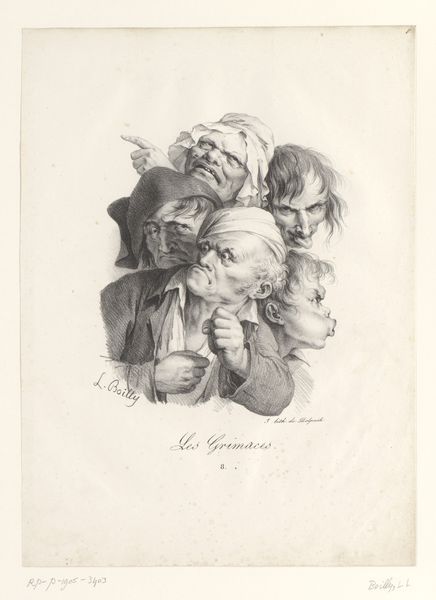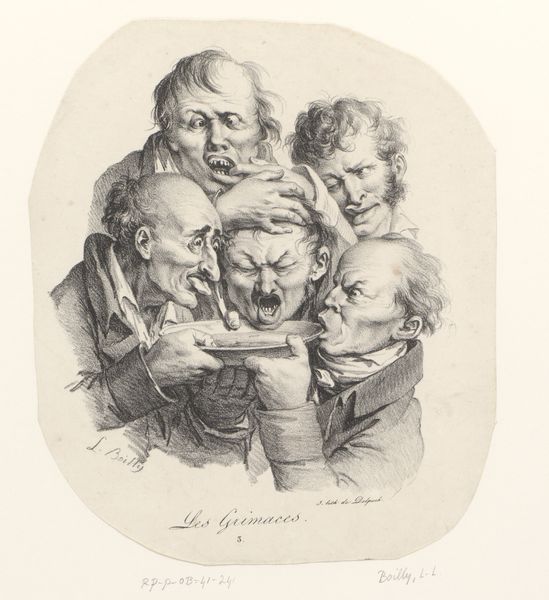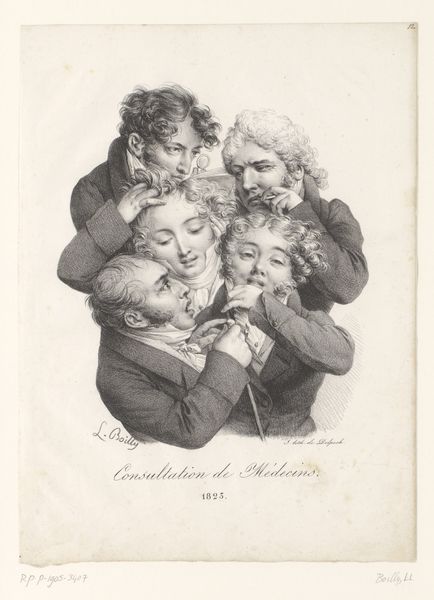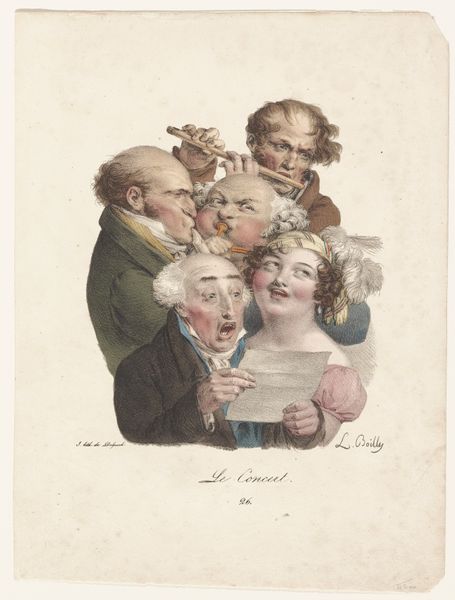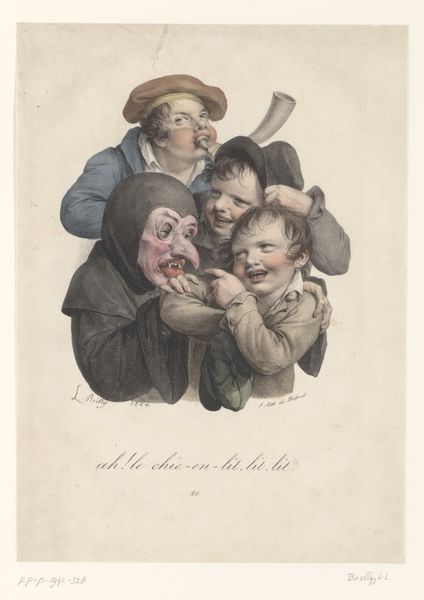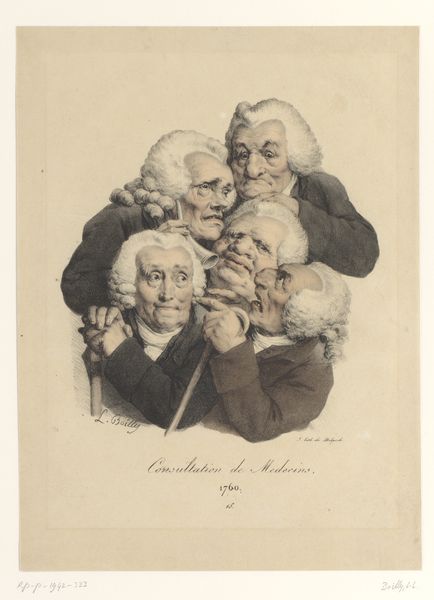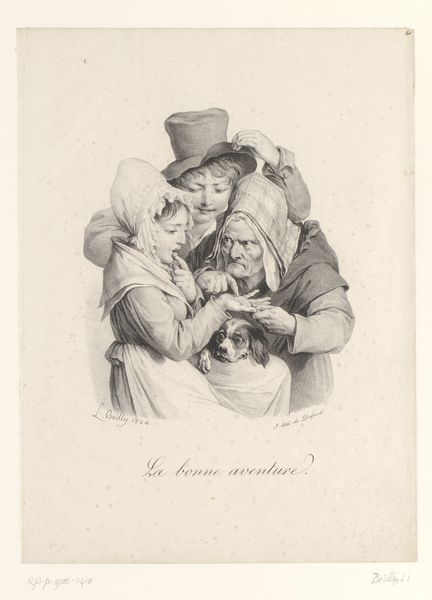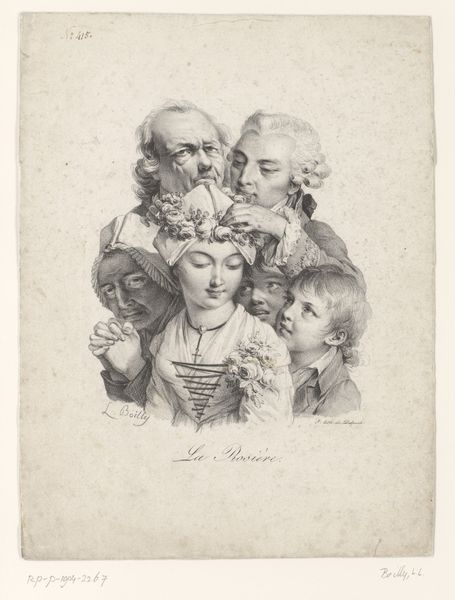
drawing, pencil
#
portrait
#
pencil drawn
#
drawing
#
caricature
#
pencil sketch
#
pencil drawing
#
group-portraits
#
romanticism
#
pencil
#
portrait drawing
#
academic-art
Dimensions: height 348 mm, width 255 mm
Copyright: Rijks Museum: Open Domain
Editor: Here we have Louis Léopold Boilly's "Caricature of Five Heads with Different Emotions" from 1823, done in pencil. I find it quite amusing how dramatically expressive each face is, a study of distinct personalities. How would you interpret the symbolism or purpose behind presenting such exaggerated emotions in this group portrait? Curator: It's intriguing, isn't it? Consider the enduring fascination with physiognomy in the 19th century - the belief that one's character could be read in the face. Boilly taps into this cultural moment, but with a twist. Are these authentic emotions, or performances? Note how they’re clustered, almost staged. Is Boilly offering a social commentary? Are they reacting to something *outside* the frame, inviting the viewer to speculate on the cause of this communal outburst? Editor: I hadn’t thought about them reacting to something beyond us. It's interesting how, even as caricatures, each figure still possesses a distinct humanity. The romanticism of the piece seems rooted in the extreme expression and yet the work feels so carefully observed. Do you think it could be academic in addition to being romantic? Curator: Indeed! Note the fine details rendered by the pencil, and that grouping; it almost suggests the tradition of history painting in its structure, wouldn’t you agree? But here, the subject matter is everyday life. Consider what visual traditions Boilly invokes, and then subverts, to challenge and perhaps even mock societal expectations of portraiture. These “grimaces”, as he titles it, suggest both universality and satire. The symbol then transcends individual identity. Editor: I see, so it’s playing with those artistic conventions. It makes me wonder, what lasting impact do you think these types of emotion-based studies had on later art forms? Curator: Consider how the intensity of emotion portrayed, even through caricature, paves the way for later Expressionist movements. By exploring the raw, unfiltered displays of inner states, Boilly offers a lens through which we might interpret our own feelings and experiences in visual art. Editor: That really broadens my perspective; it’s much more complex than just funny faces! Thanks for shedding light on that. Curator: A pleasure. Hopefully viewers will now observe how caricatures reveal deeper societal and artistic dialogues!
Comments
No comments
Be the first to comment and join the conversation on the ultimate creative platform.


